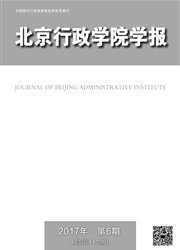

 中文摘要:
中文摘要:
城市发展动力问题一直备受社会和学界关注。新型城镇化背景下,以人为本的思路要求城市发展模式从规模粗放型向质量集约型转变、从增量扩能向做优存量调整。因为单纯依赖土地、劳动力、资金和管理效率等要素的“传统模式”,很难维持城市的可持续发展。在新背景下,大城市如何进一步发展,提升内涵与质量?文化动力模式作为一种新的发展路径,是对该问题的学术回应。文化动力中的“文化”,并不是指那种模糊的、抽象的、无所不包的文化,而是指那些与本地居民生活息息相关的生活文化设施、多样性组织、各种文化实践等构成的城市场景,以及场景中隐藏的自我表达、超凡魅力和时尚等价值观与生活方式。这些因素能对创意阶层产生吸引作用,并影响该群体的城市流动和新兴公司选址等。从这个角度来说,文化动力模式作为一种全新思维,重塑着城市发展与转型的后工业路径。
 英文摘要:
英文摘要:
The impetus of urban development is a matter of great social and academic concern. Under the new urbanization background, the people-oriented idea urges urban development modes to shift from the crude and quantitative mode to the intensive and qualitative mode. Since the traditional mode, relying solely on production factors, such as, land, labor, capital and management, is difficult to maintain the sustainable development of cities. Against the backdrop of new-type urbanization, how should the metropolis develop and enhance itself?. As an academic response, this paper proposed the cultural dynamics mode as a new development path. This paper argues that, instead of the kind of vague, abstract and all-encompassing culture, culture refers to urban scenes, consisted of cultural facilities, diverse cultural organizations and various cultural activities closely geared to local resident life, and values and lifestyle. These urban scenes attract the Creative Class and affect their urban mobility and geographical location. From this perspective, the cultural dynamics mode will be used as a new way of thinking and redirect the path of development and transformation of modern industrial cities.
 同期刊论文项目
同期刊论文项目
 同项目期刊论文
同项目期刊论文
 期刊信息
期刊信息
